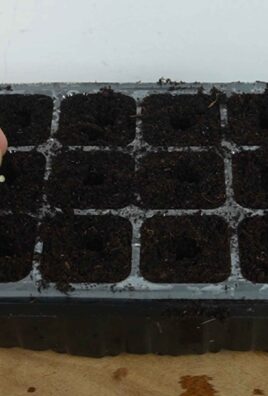Amish cleaning methods aren’t just about scrubbing harder; they’re a testament to resourcefulness, simplicity, and a deep connection to the natural world. Have you ever wondered how generations of Amish families have maintained spotless homes without relying on harsh chemicals or expensive gadgets? I know I have! It’s a fascinating blend of tradition and practicality that’s incredibly relevant in today’s world.
For centuries, Amish communities have passed down these time-tested techniques, born out of necessity and a commitment to living sustainably. These methods often utilize readily available ingredients like vinegar, baking soda, and sunshine – things you probably already have in your pantry! But beyond the ingredients, it’s the philosophy behind these practices that truly shines. It’s about mindful cleaning, respecting the environment, and creating a healthy home for your family.
In a world saturated with complicated cleaning products and overwhelming choices, the simplicity of Amish cleaning methods is incredibly appealing. We’re all looking for ways to reduce our exposure to harmful chemicals, save money, and create a more eco-friendly lifestyle. These DIY tricks offer a fantastic solution, providing effective cleaning power without compromising our health or the planet. So, let’s dive into some of these amazing techniques and discover how we can bring a little bit of Amish wisdom into our own homes!

DIY Amish Cleaning Secrets: Natural Solutions for a Sparkling Home
Hey there, fellow cleaning enthusiasts! I’m always on the lookout for effective and eco-friendly ways to keep my home spick and span. Recently, I stumbled upon some traditional Amish cleaning methods, and let me tell you, I’m hooked! They rely on simple, natural ingredients and time-tested techniques. Forget harsh chemicals and expensive cleaners; these methods are gentle on your home, your wallet, and the environment. Let’s dive into some of my favorite Amish cleaning secrets!
Baking Soda: The All-Purpose Wonder
Baking soda is a staple in Amish households, and for good reason! It’s a fantastic deodorizer, mild abrasive, and natural cleaner. I use it for everything from scrubbing sinks to freshening carpets.
Uses for Baking Soda:
* Deodorizing Carpets: Sprinkle baking soda liberally over your carpets, let it sit for at least 15 minutes (or even overnight for stubborn odors), and then vacuum thoroughly.
* Cleaning Sinks and Tubs: Make a paste of baking soda and water to scrub away grime and stains.
* Freshening Refrigerators: Place an open box of baking soda in your refrigerator to absorb odors.
* Cleaning Ovens: Make a paste of baking soda and water, spread it inside your oven, let it sit overnight, and then scrub away the grime.
* Unclogging Drains: Pour 1 cup of baking soda down the drain, followed by 1 cup of vinegar. Let it fizz for 30 minutes, then flush with hot water.
Step-by-Step: Cleaning Your Oven with Baking Soda
1. Prepare the Oven: Remove oven racks and any loose debris.
2. Make the Paste: In a bowl, mix 1/2 cup of baking soda with enough water to form a spreadable paste. I usually start with a few tablespoons of water and add more until I get the right consistency.
3. Apply the Paste: Spread the baking soda paste evenly over the interior surfaces of your oven, avoiding the heating elements. I like to use my hands (with gloves on, of course!) to ensure good coverage.
4. Let it Sit Overnight: This is the key! The baking soda needs time to work its magic and loosen the baked-on grime.
5. Scrub and Wipe: The next day, use a damp sponge or cloth to scrub away the baking soda paste and loosened grime. You might need to use a scraper for stubborn spots.
6. Rinse Thoroughly: Rinse the oven with clean water to remove any remaining baking soda residue. I use a spray bottle filled with water and wipe it down with a clean cloth.
7. Replace Racks: Once the oven is dry, replace the oven racks.
Vinegar: The Acidic Avenger
Vinegar, especially white distilled vinegar, is another Amish cleaning staple. Its acidity makes it a powerful disinfectant, degreaser, and stain remover. I use it diluted with water for most cleaning tasks.
Uses for Vinegar:
* Cleaning Windows and Mirrors: Mix equal parts vinegar and water in a spray bottle and use it to clean windows and mirrors.
* Disinfecting Surfaces: Spray vinegar on countertops, cutting boards, and other surfaces to kill germs.
* Removing Hard Water Stains: Soak items with hard water stains in vinegar or spray vinegar directly onto the stains.
* Cleaning Coffee Makers: Run a cycle of vinegar and water through your coffee maker to remove mineral buildup.
* Softening Laundry: Add 1/2 cup of vinegar to your washing machine during the rinse cycle to soften clothes.
Step-by-Step: Cleaning Windows with Vinegar
1. Prepare the Solution: In a spray bottle, mix equal parts white distilled vinegar and water. I usually use a 50/50 ratio.
2. Spray the Windows: Spray the vinegar solution liberally onto the windows.
3. Wipe with a Clean Cloth: Use a clean, lint-free microfiber cloth to wipe the windows dry. I like to use a circular motion to remove any streaks.
4. Buff for Shine: For an extra shine, buff the windows with a dry microfiber cloth.
Lemon Juice: The Citrus Powerhouse
Lemon juice is a natural cleaner and deodorizer with a pleasant citrus scent. I love using it to brighten surfaces and remove stains.
Uses for Lemon Juice:
* Brightening White Clothes: Add 1/2 cup of lemon juice to your washing machine when washing white clothes.
* Cleaning Cutting Boards: Rub a lemon half over your cutting board to disinfect and remove odors.
* Removing Stains from Countertops: Apply lemon juice to stains on countertops and let it sit for a few minutes before wiping clean.
* Polishing Brass and Copper: Make a paste of lemon juice and salt and use it to polish brass and copper items.
* Freshening Garbage Disposals: Grind lemon peels in your garbage disposal to freshen it up.
Step-by-Step: Polishing Brass with Lemon Juice and Salt
1. Prepare the Paste: In a small bowl, mix lemon juice and salt to form a paste. I usually use about 1 tablespoon of lemon juice and 2 tablespoons of salt.
2. Apply the Paste: Apply the lemon juice and salt paste to the brass item.
3. Rub Gently: Use a soft cloth to rub the paste onto the brass, using gentle circular motions.
4. Rinse Thoroughly: Rinse the brass item with warm water to remove the paste.
5. Dry and Polish: Dry the brass item with a clean cloth and polish it to a shine.
Castile Soap: The Gentle Cleanser
Castile soap is a vegetable-based soap that’s gentle on your skin and effective at cleaning. I use it for everything from washing dishes to cleaning floors.
Uses for Castile Soap:
* Washing Dishes: Dilute castile soap with water to wash dishes.
* Cleaning Floors: Add a few tablespoons of castile soap to a bucket of water to clean floors.
* Washing Hands: Use castile soap as a gentle hand soap.
* Making Laundry Detergent: Combine castile soap with washing soda and borax to make your own laundry detergent.
* Cleaning Makeup Brushes: Use castile soap to gently clean your makeup brushes.
Step-by-Step: Making All-Purpose Cleaner with Castile Soap
1. Gather Your Supplies: You’ll need a spray bottle, castile soap (unscented or your favorite scent), water, and essential oils (optional).
2. Mix the Solution: In the spray bottle, combine 1/4 cup of castile soap with 1 quart (4 cups) of water.
3. Add Essential Oils (Optional): If you want to add a scent, add 10-20 drops of your favorite essential oils. I like to use lemon, lavender, or tea tree oil.
4. Shake Well: Shake the spray bottle well to combine the ingredients.
5. Use as Needed: Spray the cleaner onto surfaces and wipe clean with a cloth.
Borax: The Stain Fighter
Borax is a natural mineral that’s effective at removing stains and deodorizing. I use it in my laundry and to clean tough stains.
Uses for Borax:
* Boosting Laundry Detergent: Add 1/2 cup of borax to your washing machine along with your regular laundry detergent to boost its cleaning power.
* Removing Stains: Make a paste of borax and water and apply it to stains. Let it sit for a few minutes before wiping clean.
* Deodorizing Trash Cans: Sprinkle borax in the bottom of your trash cans to absorb odors.
* Cleaning Toilets: Pour 1/2 cup of borax into your toilet bowl and let it sit for at least 30 minutes before flushing.
* Killing Mold and Mildew: Make a solution of borax and water and spray it on mold and mildew. Let it sit for a few minutes before wiping clean.
Step-by-Step: Making a Borax Stain Remover Paste
1. Gather Your Supplies: You’ll need borax powder and water.
2. Mix the Paste: In a small bowl, mix borax powder with enough water to form a thick paste. I usually start with a tablespoon of borax and add water a little at a time until I get the right consistency.
3. Apply the Paste: Apply the borax paste directly to the stain.
4. Let it Sit: Let the paste sit on the stain for at least 30 minutes, or even longer for stubborn stains.
5. Scrub Gently: Use a soft

Conclusion
So, there you have it! Embracing these time-tested Amish cleaning methods isn’t just about saving money; it’s about connecting with a simpler, more sustainable way of life. It’s about understanding that powerful cleaning doesn’t require harsh chemicals or expensive gadgets. It’s about rediscovering the effectiveness of natural ingredients and the satisfaction of a truly clean home, achieved through honest effort and a respect for the environment.
Why is this a must-try? Because these methods work. They’ve been passed down through generations, proving their effectiveness in tackling everyday messes and maintaining a spotless home. They’re gentle on your family, your pets, and the planet. And, let’s be honest, they’re incredibly budget-friendly. You likely already have many of the necessary ingredients in your pantry!
But don’t think these methods are set in stone. Feel free to experiment and adapt them to your own needs and preferences. For instance, if you find the scent of vinegar too strong, infuse it with citrus peels for a more pleasant aroma. Add a few drops of your favorite essential oil to your cleaning solutions for an extra boost of fragrance and antibacterial power. If you’re dealing with particularly stubborn stains, try creating a paste of baking soda and water and letting it sit on the stain for a longer period before scrubbing. You can also try using different types of cloths for different surfaces – microfiber cloths are excellent for polishing, while old t-shirts are great for general cleaning.
Consider these variations:
* **Lemon Power:** Add lemon juice to your vinegar solution for extra degreasing power and a fresh scent. This is particularly effective for cleaning kitchen surfaces.
* **Essential Oil Boost:** Incorporate essential oils like tea tree, lavender, or eucalyptus for their antibacterial and antifungal properties.
* **Herbal Infusions:** Infuse your cleaning vinegar with herbs like rosemary or thyme for a natural and aromatic cleaning experience.
* **Castile Soap Addition:** Add a small amount of castile soap to your cleaning solutions for extra cleaning power, especially for greasy messes.
The beauty of these Amish cleaning methods lies in their simplicity and adaptability. They encourage you to be resourceful and creative, using what you have on hand to create effective and eco-friendly cleaning solutions.
We wholeheartedly encourage you to give these Amish cleaning methods a try. Ditch the expensive, chemical-laden cleaners and embrace a more natural and sustainable approach to cleaning your home. You might be surprised at how effective and satisfying it can be.
And most importantly, we want to hear about your experience! Share your tips, tricks, and variations in the comments below. Let us know what worked for you, what challenges you faced, and any creative solutions you came up with. Together, we can build a community of like-minded individuals who are passionate about natural cleaning and sustainable living. Let’s rediscover the power of simple, effective, and environmentally friendly cleaning practices. Your feedback will help others discover the benefits of these time-tested techniques.
Frequently Asked Questions (FAQs)
What exactly are Amish cleaning methods?
Amish cleaning methods refer to traditional cleaning practices used by Amish communities, often relying on natural and readily available ingredients like vinegar, baking soda, lemon juice, and borax. These methods prioritize simplicity, effectiveness, and sustainability, avoiding harsh chemicals and expensive commercial cleaners. They emphasize resourcefulness and a connection to nature.
Are these methods really effective compared to commercial cleaners?
Yes, in many cases, they are just as effective, if not more so, for certain cleaning tasks. Vinegar, for example, is a powerful disinfectant and degreaser. Baking soda is an excellent abrasive cleaner and deodorizer. Lemon juice is a natural bleaching agent and degreaser. While some heavy-duty cleaning tasks might require specialized commercial products, these natural alternatives are perfect for everyday cleaning and maintenance. The key is understanding which ingredient works best for which task.
Are Amish cleaning methods safe for children and pets?
Generally, yes. Because they rely on natural ingredients, these methods are significantly safer than many commercial cleaners that contain harsh chemicals that can be harmful if ingested or inhaled. However, it’s still important to exercise caution. Keep cleaning solutions out of reach of children and pets. While ingredients like vinegar and baking soda are generally safe, undiluted vinegar can be irritating to the skin and eyes. Always dilute cleaning solutions properly and supervise children when they are helping with cleaning. Borax, while a natural mineral, should also be handled with care and kept away from children and pets.
Where can I find the ingredients for these cleaning methods?
The beauty of Amish cleaning methods is that the ingredients are readily available and affordable. You can find vinegar, baking soda, lemon juice, and borax at most grocery stores and supermarkets. You may even already have them in your pantry! For essential oils, you can check health food stores, online retailers, or specialty shops.
How do I store homemade cleaning solutions?
Store homemade cleaning solutions in clean, labeled spray bottles or containers. It’s important to label them clearly to avoid confusion, especially if you have children or other family members who might not know what’s inside. Store them in a cool, dark place away from direct sunlight and heat. Most homemade cleaning solutions will last for several months, but it’s always a good idea to make a fresh batch every few weeks to ensure optimal effectiveness.
Can I use these methods on all surfaces?
Not necessarily. While many of these methods are safe for most surfaces, it’s always a good idea to test them in an inconspicuous area first, especially on delicate or sensitive materials like marble, granite, or wood. Vinegar, for example, can etch marble and granite, so it’s best to avoid using it on these surfaces. Baking soda can be abrasive, so use it with caution on delicate surfaces. Always research the best cleaning methods for specific materials before applying any cleaning solution.
What are some common mistakes to avoid when using Amish cleaning methods?
One common mistake is using too much of a particular ingredient. More isn’t always better. Using too much vinegar, for example, can leave a strong odor. Another mistake is not diluting cleaning solutions properly. Always follow the recommended dilution ratios to avoid damaging surfaces or causing irritation. Finally, be sure to test cleaning solutions in an inconspicuous area before applying them to the entire surface.
How can I make my own all-purpose cleaner using Amish cleaning methods?
A simple and effective all-purpose cleaner can be made by combining equal parts white vinegar and water in a spray bottle. You can add a few drops of your favorite essential oil for fragrance. This solution is great for cleaning countertops, sinks, and other surfaces. For a stronger cleaner, you can add a tablespoon of baking soda to the mixture.
Can I use these methods to clean my laundry?
Yes, absolutely! Vinegar can be used as a natural fabric softener and odor eliminator. Baking soda can be added to the wash to boost the cleaning power of your detergent. Borax can be used as a laundry booster and stain remover. These natural alternatives are gentler on your clothes and the environment than many commercial laundry detergents.
How do I get rid of stubborn stains using Amish cleaning methods?
For stubborn stains, try creating a paste of baking soda and water and applying it to the stain. Let it sit for several minutes or even overnight before scrubbing gently. You can also try using lemon juice or vinegar to pre-treat stains before washing. For grease stains, try using a mixture of baking soda and dish soap. Remember to always test stain removal methods in an inconspicuous area first.





Leave a Comment